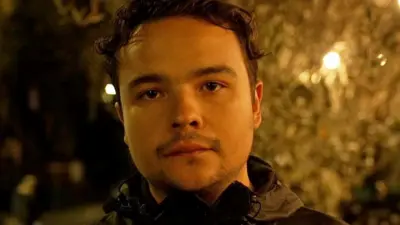We've updated our Privacy and Cookies Policy
We've made some important changes to our Privacy and Cookies Policy and we want you to know what this means for you and your data.
Westminster Hall: Trials, speeches and lying-in-state
Image source, PA Media
- Author, James Clarke
- Role, ҙуПуҙ«ГҪ News
Westminster Hall is where the Queen's coffin will lie in state and where King Charles III addressed MPs and peers for the first time as monarch on Monday.
Built in 1097, it is a huge building that has played a significant role in British history across the centuries.
It has hosted the trials of Charles I and Guy Fawkes, Henry VIII's coronation banquet and a Nelson Mandela speech.
The hall survived a devastating fire in the 19th Century that destroyed most of the rest of the Palace of Westminster.
The building of Westminster Hall was commissioned by King William II - the son of William the Conqueror - who wanted a significant construction project to impress his new subjects. Its stone walls were about 6ft (2m) thick and remain largely intact today, albeit extended in height and refaced during processes of restoration.
It acted as a banqueting hall - though was so large other smaller halls had to be built nearby for some occasions, with the royal household usually eating in one of those.
From the 12th Century, Westminster became the administrative centre of the kingdom and the base for the Treasury.
The hall became the most common site for legal proceedings under the Magna Carta, in 1215, which stipulated there should be a fixed place where judges should sit.
That led to it being the location for the trials of Guy Fawkes - for plotting to blow up Parliament in 1606 - and of King Charles I.
Although monarchs had been deposed or murdered before, the trial of Charles I in 1649 was the first time one had been tried in public and condemned to death while still reigning. Accused of tyranny and treason, the king was convicted within a week.
Eleven years later when the monarchy was reinstalled under Charles II, the bodies of some of the key men who had ordered his father's execution were exhumed and their bodies stuck on poles on one of the hall's towers. Oliver Cromwell's head was there for more than 20 years.
Image source, Alamy
In modern times, the hall remains in regular use. Many visitors to the Houses of Parliament walk through the hall after entering the building and passing through security checks.
Parliamentary discussions happen there and it stages addresses from visiting dignitaries such as French President Charles de Gaulle in 1960, South African leader Nelson Mandela in 1996, Pope Benedict in 2010 and US President Barack Obama in 2011.
Image source, PA Media
The first royal lying-in-state in the hall was that of Edward VII in 1910 and the most recent that of the Queen Mother in 2002 - the same year the Queen addressed MPs and peers on the occasion of her Golden Jubilee.
But it is not only royals who have lain in state in Westminster Hall - the same honour was extended to former Prime Minister Winston Churchill following his death in 1965 and to the victims of the R101 airship disaster of 1930.
Top Stories
More to explore
Most read
Content is not available








